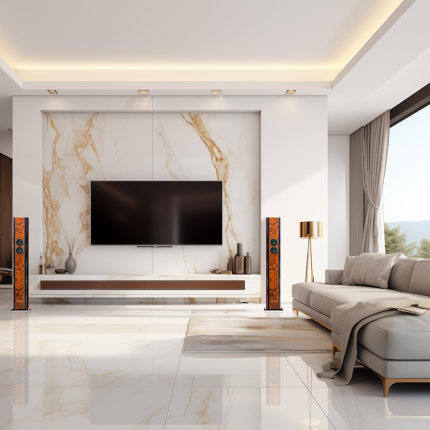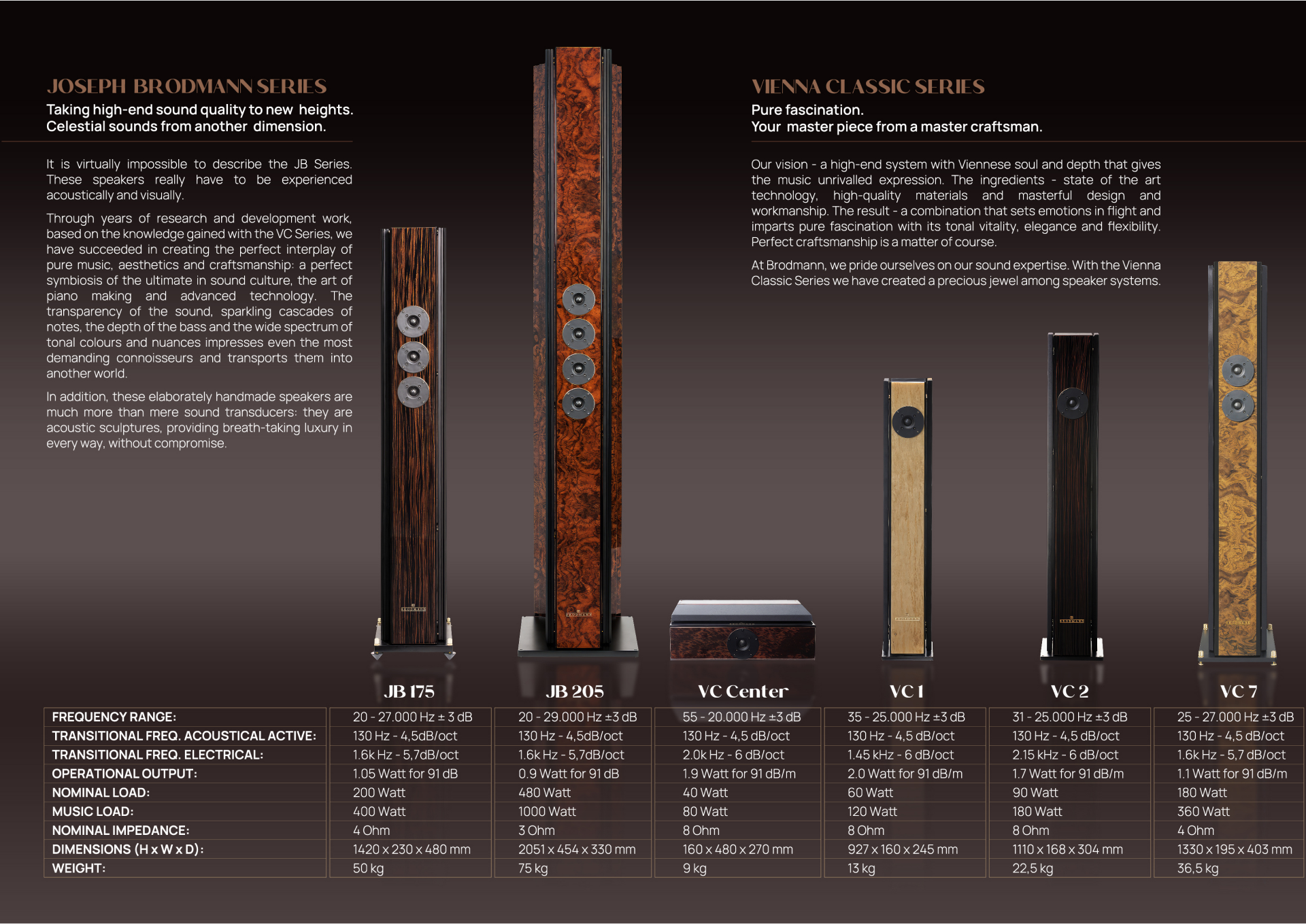SETTING UP THE LOUDSPEAKERS
Brodmann loudspeaker cabinets are designed for operation in living rooms. Because the choice of where in the room to place the loudspeakers is essentially a practical consideration, excellent results can be successfully achieved in every living room.
FIRST PRINCIPLES:
The difference between floor standing speakers and shelf speakers: Floor standing cabinets are designed to be freestanding and are therefore not suitable for use on shelves. The loudspeakers and the listener must form the corners of an equilateral triangle. Normally the positioning of the speaker cabinets will be parallel to, or against the wall. However under certain room conditions this need not be the case and moving the speaker cabinets at an angle to the walls will be preferable, i.e. across a corner of the room. You will need to decide whether, in placing the loudspeakers against one of the shorter walls of a rectangular room, there is more of an increase in the bass than when they are placed against one of the longer walls. The first stage is now complete. However, by using the systematic procedure described on the reverse, the sound can be improved still further. Since the ear is able to distinguish a much higher degree of sound complexity than, for example, a computer, additional fine tuning of the loudspeakers' position is still necessary to obtain the best possible sound.

A RECOMMENDATION
We recommend you use a second person to adjust them for you, allowing you to remain in the optimum listening position all the time.
Positioning
The closer the cabinets are positioned to the corners where two walls meet, the greater the increase in the bass. This effect is increased when the speaker is positioned close to three surfaces, i.e. the meeting point of two walls plus the ceiling and/or the floor. The opposite effect, a reduction in the bass, occurs the further the cabinets are moved from those corners. If the bass is increased too much the sound will lose precision, transparency, clarity and lightness. Too little bass, on the other hand, will render the bass weak, empty and thin with a possible over-presence of the mid-range and treble range in particular. In the optimum position the bass is dynamic and explosive, providing full sound, clarity, transparency and lightness. You can easily find the best position in most living rooms by conducting listening tests and moving the cabinets, making big changes to start with, and then smaller and smaller ones until you have achieved the best sound.
SITTING POSITION
Besides a proportion of direct sound, indirect sound which is reflected from the walls, ceiling and floor will also be radiated into the room by the loudspeaker. Direct and indirect sound meet inside the room at different angles and phases which leads to a number of peaks and troughs, mainly in the bass range frequency. So it may well be the case that by making very minor changes in the sitting position (because the stereo balance is mainly altered by changing the longitudinal axis) there will be a very noticeable change in the type of sound described under 1. and the effect is heightened as required.
ADJUSTMENT
As a starting point the loudspeaker cabinets are set up with the radiated axis directed at the listener. However, the acoustic conditions in your listening room may vary to an extent. A slight rotation of the loudspeakers on their longitudinal axis will often produce an amazing improvement in the sound. If the loudspeakers are set up parallel to the side walls, the longitudinal axis of the speakers will be directed past the listener into the room. The further the loudspeakers are turned towards the listener, the more noticeable the stereophonic reproduction will become, the more graduated the bass notes and the more flexible and dynamic the soloists. The speakers can be turned inwards until the best possible stereo reproduction of the orchestra and stereo recording conditions are obtained and the soloists are heard to maximum effect. If the loudspeakers are rotated beyond this point, the sound will disintegrate into a left-right effect, giving the impression of 'divided' soloists and making the phonetic representation of the musicians become superficial with shrill overtones. By following this adjustment procedure the sound will be optimised and you will enjoy an unparalleled authentic listening experience.











